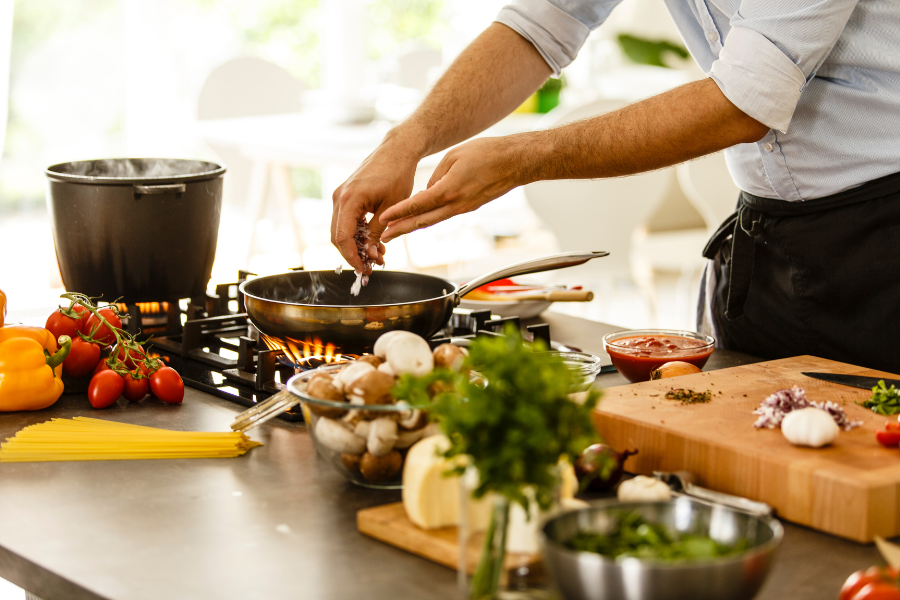
When we think about creating a healthy home environment, we often focus on external factors such as beautifying spaces or removing visible dust. However, have you ever considered the potential dangers lurking right inside your own kitchen? Surprisingly, the seemingly innocent acts of cooking and cleaning can have a significant impact on the air quality within your home because they release indoor air pollutants. Let’s uncover some unexpected hazards associated with these everyday activities and discuss how you can take proactive steps to protect yourself and your loved ones.
Cooking: A Recipe for Indoor Air Pollution
Cooking is an essential part of our daily lives, but it can release harmful pollutants into the air. For instance, burnt and smoky oil or an excessively hot teflon pan releases fumes. So whether you’re frying, grilling, or even toasting, the cooking process inevitably generates various airborne contaminants such as:
- Carbon monoxide
- Nitrogen dioxide
- Volatile organic compounds (VOCs)
These pollutants could lead to respiratory problems, allergies, and asthma, even potentially contributing to long-term health issues. To mitigate these risks, prioritize indoor air cleaning by ensuring your kitchen is well-ventilated. Indoor air quality guidelines suggest opening windows or turning on exhaust fans to allow fresh air to circulate. Opt for cooking methods that produce fewer pollutants, such as steaming or boiling instead of frying. Also, ensure proper maintenance of gas stoves to prevent gas leaks, which can be extremely hazardous and even deadly.
Cleaning: A Double-Edged Sword
Cleaning our homes is an important chore that keeps our living spaces tidy and pleasant. However, many common cleaning products contain chemicals that have detrimental effects on indoor air quality. For instance, volatile chemicals like ammonia and bleach release fumes that irritate the eyes, nose, and throat. In some cases, they trigger respiratory problems, especially for those with allergies or asthma.
Mitigate risks by switching to natural cleaning alternatives. Vinegar, baking soda, and lemon juice can be effective for various cleaning tasks. Look for eco-friendly cleaning products labeled as “non-toxic” or “low-VOC” as they follow IAQ standards. Remember to follow product instructions, use gloves, and ensure proper ventilation while cleaning.
Take Control of Your Indoor Air Quality
Now that you’re aware of the potential hazards associated with cooking and cleaning, it’s time to take proactive steps to safeguard your indoor air quality. Effective indoor air quality strategies strongly recommend more indoor plants since they filter air impurities. IAQ products like an air purifier can also keep the air fresh. A reliable indoor air quality monitor like uHoo can also help. Its IAQ sensor monitors real-time data on key air quality parameters, including:
- Temperature
- Humidity
- Carbon dioxide
- Carbon monoxide
- VOCs
- Mold
- Airborne particles
By tracking your home’s air quality with powerful indoor air quality sensors, you can identify patterns and potential sources of pollution. While cooking and cleaning are essential aspects of our daily lives, understanding associated risks allows us to make conscious choices and implement IAQ solutions to protect our health and well-being. Knowledge empowers you to adjust your cooking and cleaning practices and ensure a healthier living environment for yourself and your family. Invest in uHoo to create a healthier home environment. Don’t compromise on the air you breathe!


